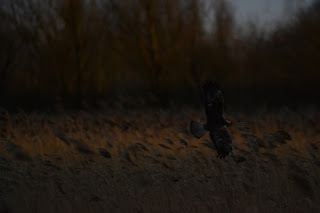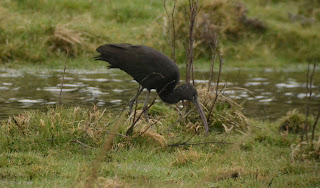I followed the rainbow that lit the back of the pits, and scanned a group of gulls that were battling the angry dark waves. A few Cormorants took to the air and were soon lost overhead in an uncontrolled beat towards the shelter of Roswell Pits.
Over the reedbed, five harriers fared better in the strong gusts. They came again and again, dipping low under the airstream, skimming the tops of the reed heads, wings angled then spread as the wind dropped then blew fiercely. The light caught their plumage, gilding it with evening gold.
Suddenly a huge falcon was above them, tilting downwards briefly before speeding away to the east, unable to face the wind head-on as the harriers were doing.
A group of wagtails, like storm-tossed leaves, gathered below me among the ruins of last years rushes, and waited for the night to hide them.
















































